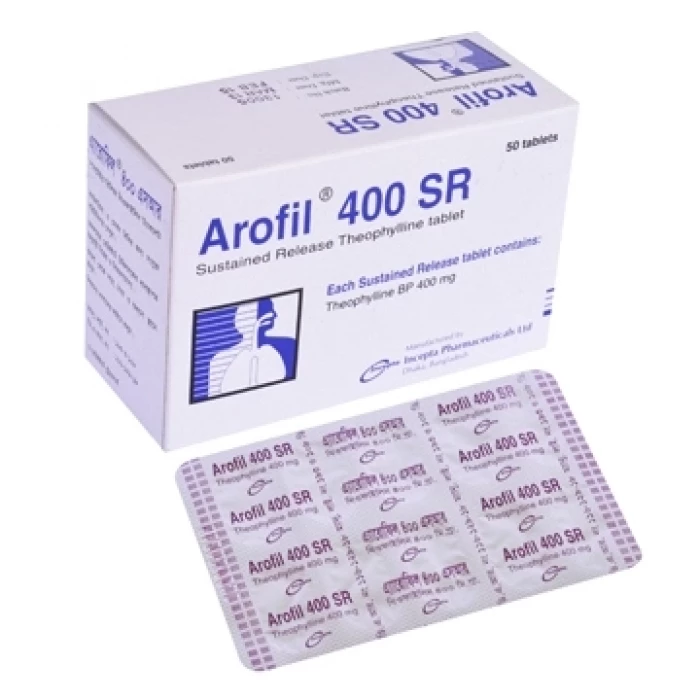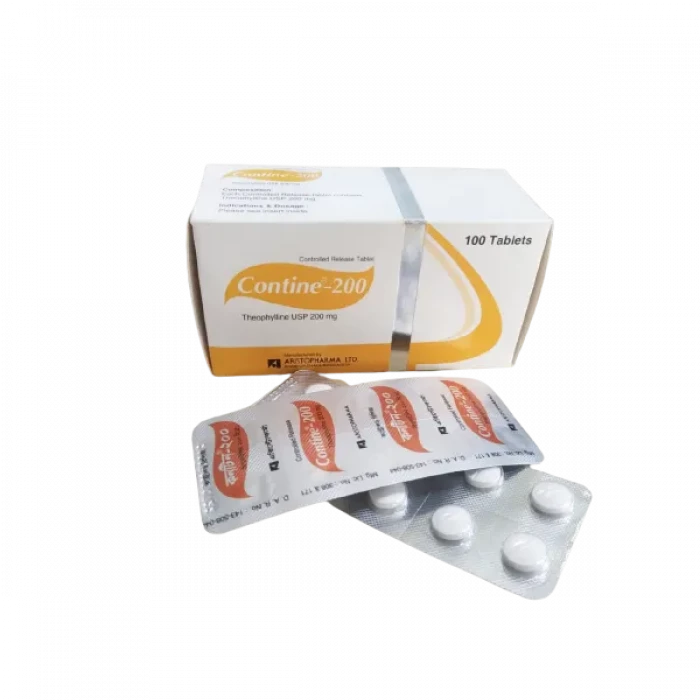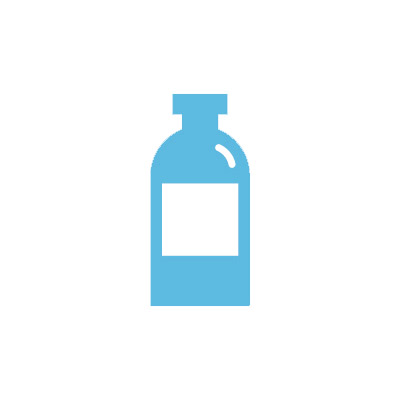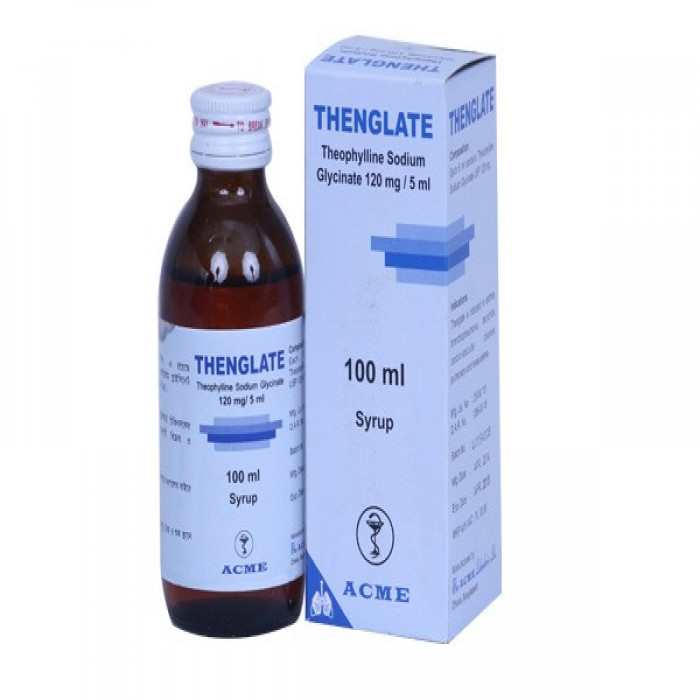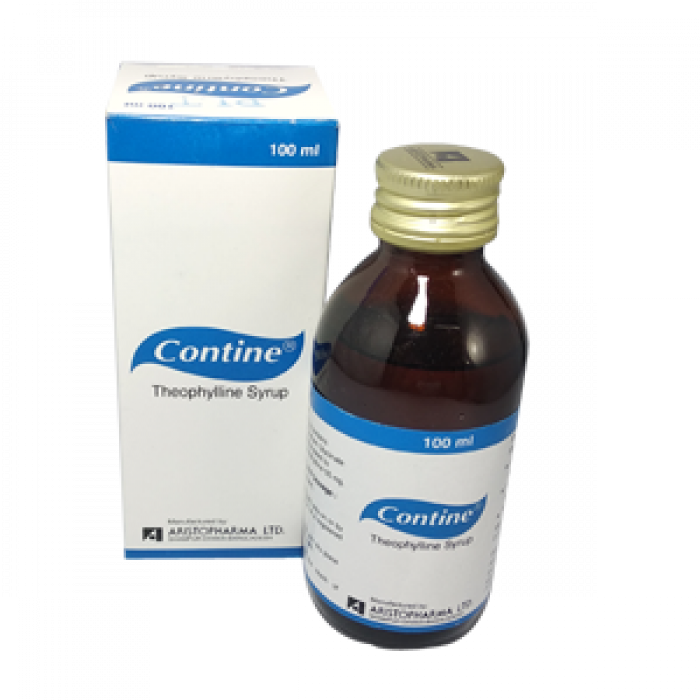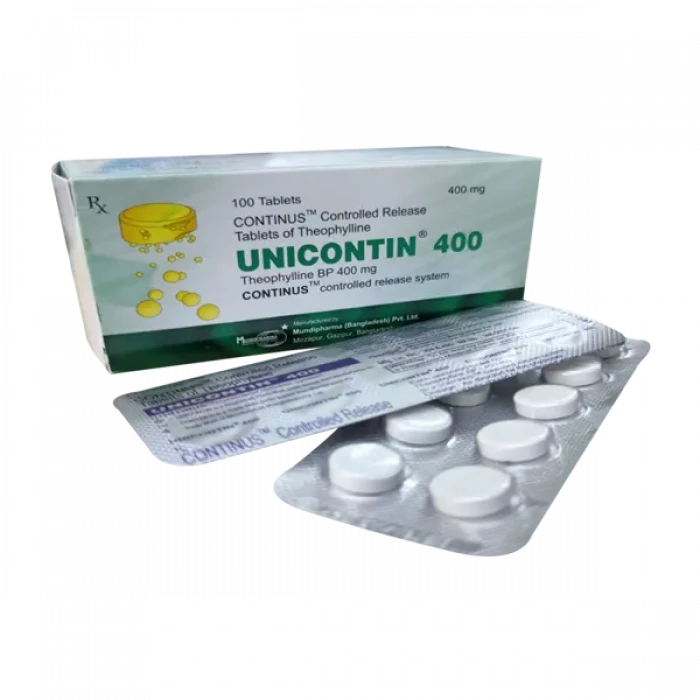

✔ 100% Authentic Product

Tablet Theophylline 400 mgMundipharma (BD) Pvt. Ltd.
Unicontin 400 is used to treat and prevent symptoms of asthma and chronic obstructive pulmonary disorder (a lung disorder in which flow of air to the lung is blocked). It helps in relaxing the muscles of the air passages, thus widening it and making it easier to breathe

100% Genuine Products, Guaranteed
Safe & Secure Payments, Always
Fast, Secure & Efficient Delivery
Proper Packaging
Cashback offer (Optional):
🔹 Foreign manufacturer products are not applicable for Cashback offer
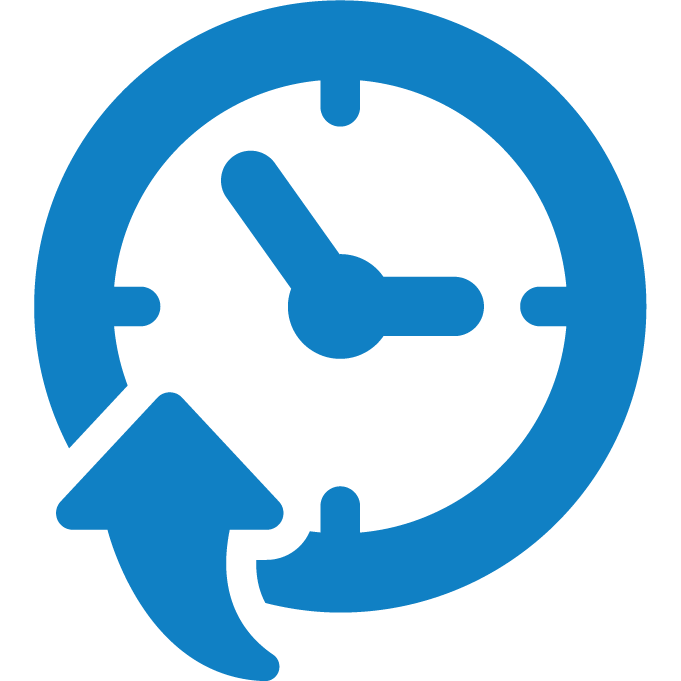 Cash on Delivery - All over Bangladesh
Cash on Delivery - All over Bangladesh Urgent Delivery - 2 Hours Dhaka City
Urgent Delivery - 2 Hours Dhaka City ফ্রি ডেলিভারি! - ১৪৯৯ টাকা+ অর্ডারে ঢাকা
শহরে ।
ফ্রি ডেলিভারি! - ১৪৯৯ টাকা+ অর্ডারে ঢাকা
শহরে । ফ্রি ডেলিভারি! - ২৯৯৯ টাকা+ অর্ডারে ঢাকার
বাহিরে ।
ফ্রি ডেলিভারি! - ২৯৯৯ টাকা+ অর্ডারে ঢাকার
বাহিরে ।
✅ Description:
UNSAFE
It is unsafe to consume alcohol with Unicontin 400.
CONSULT YOUR DOCTOR
Unicontin 400 may be unsafe to use during pregnancy. Although there are limited studies in humans, animal studies have shown harmful effects on the developing baby. Your doctor will weigh the benefits and any potential risks before prescribing it to you. Please consult your doctor.
SAFE IF PRESCRIBED
Unicontin 400 is safe to use during breastfeeding. Human studies suggest that the drug does not pass into the breastmilk in a significant amount and is not harmful to the baby. Avoiding breastfeeding for 2-4 hours after Unicontin 400 can further decrease the exposure of medicine to the baby.
SAFE
Unicontin 400 does not usually affect your ability to drive.
SAFE IF PRESCRIBED
Unicontin 400 is safe to use in patients with kidney disease. No dose adjustment of Unicontin 400 is recommended.
CAUTION
Unicontin 400 should be used with caution in patients with liver disease. Dose adjustment of Unicontin 400 may be needed. Please consult your doctor.
✔️
Medicine Overview of Unicontin 400mg Tablet
Introduction
Unicontin 400 is used to treat and prevent symptoms of asthma and chronic obstructive pulmonary disorder (a lung disorder in which flow of air to the lung is blocked). It helps in relaxing the muscles of the air passages, thus widening it and making it easier to breathe. Unicontin 400 can be taken with the food in evening. But take it at the same time every day to get the most benefit. The dose and how often you take it depends on what you are taking it for. Your doctor will decide how much you need to improve your symptoms. You should take this medicine for as long as it is prescribed for you. Do not miss even a single dose, if in any case, you missed a dose, take it as soon as you remember or better to skip the missed dose and continue with regular dosing. It does not work immediately or prevent the already started breathing trouble , hence always carry your medical inhaler with you for an emergency. The most common side effects of this medicine include vomiting, headache, nausea, and stomach upset. If these bother you or appear serious, let your doctor know. There may be ways of reducing or preventing them. Generally, it is advised not to consume alcohol or do not smoke while on treatment. You must avoid high caffeinated products like coffee, tea, and dark chocolates as it enhances drug side effects. Before taking this medicine, let your doctor if you have kidney or liver disease or if you have heart-related problems. Your doctor should also know about all other medicines you are taking as many of these may make this medicine less effective or change the way it works. Inform your doctor if you are pregnant or breastfeeding before starting the treatment.
✔️
Uses of Unicontin 400
- Chronic obstructive pulmonary disease (COPD)
- Asthma
Side effects of Unicontin 400
Common
- Upset stomach
- Vomiting
- Headache
- Nausea
- Restlessness
How to use Unicontin 400
Take this medicine in the dose and duration as advised by your doctor. Swallow it as a whole. Do not chew, crush or break it. Unicontin 400 is to be taken with food.
How Unicontin 400 works
Unicontin 400 is a bronchodilator. It works by relaxing the muscles of the airways and widens airways. This makes breathing easier.
Quick Tips
You have been prescribed OD PHYLLIN 600 MG TABLET for prevention and treatment of asthma and chronic obstructive pulmonary disease (COPD).
It should be taken at the same time each day, preferably in the evening after food.
It does not work right away and should not be used to relieve sudden breathing problems. Always keep a fast-acting (rescue) inhaler with you.
Your doctor may take regular blood test to monitor potassium level and the level of this medicine in your body.
Notify your doctor if you have ever been diagnosed with kidney, liver or heart disease, or if you have a smoking history. Your dose may need to be adjusted.
Do not discontinue use without consulting your doctor, even if you feel better.
Brief Description
Indication
Asthma, Chronic obstructive pulmonary disease, Bronchospasm, Apnoea of prematurity
Administration
May be taken with or without food, at least 1 hour before or 2 hour after meal.
Adult Dose
Oral Acute Asthma Loading Dose: 5 mg/kg loading dose (patient not receiving theophylline or aminophylline). Maintenance of Asthma, COPD General Dosing Recommendations The dose of theophylline must be individualized on the basis of peak serum theophylline concentration measurements in order to achieve a dose that will provide maximum potential benefit with minimal risk of adverse effects. Maintenance Dose: 10-16/mg/kg/day Adult: Starting Dose: 300-400mg/day once or twice daily. After 3 days if tolerated, increase dose to 400-600mg/day once or twice dialy. Max: 600mg/day Adult: As SR/CR Cap or Tab, 200/300 mg: One tablet/capsule every 12 hourly. As 400mg tablet/capsule One tab/cap is once daily in the evening. Elderly: Lower doses should be used. Hepatic impairment: Reduce dose.
Child Dose
Oral Acute Asthma Loading Dose: 5 mg/kg loading dose If no theophylline has been administered in the previous 24 hours 2.5 mg/kg loading dose If theophylline has been administered in the previous 24 hours Maintenance of Asthma General Dosing Recommendations The dose of theophylline must be individualized on the basis of peak serum theophylline concentration measurements in order to achieve a dose that will provide maximum potential benefit with minimal risk of adverse effects. Maintenance Dose: Child 1.5-6 months: 10 mg/kg/day PO in divided doses 6-12 months: 12-18 mg/kg/day PO in divided doses 1-9 years: 8 mg/kg PO (extended release) q8hr 9-12 years: 6.4 mg/kg PO (extended release) q8hr 12-16 years: 5.6 mg/kg PO (extended release) q8hr Child 1-15 years <45 kg: Starting Dose: 12-14 mg/kg/day up to a maximum of 300 mg/day After 3 days if tolerated, increase dose to 16 mg/kg/day up to a maximum of 400 mg/day administration. After more days, if tolerated, and if needed increase dose to 20 mg/kg/day up to a maximum of 600 mg/day Child 1-15 years >45 kg: Starting Dose: 300-400mg/day once or twice daily. After 3 days if tolerated, increase dose to 400-600mg/day once or twice dialy. Max: 600mg/day
✔️
Contraindication
Hypersensitivity to xanthine derivatives, porphyria.
Mode of Action
Theophylline competitively blocks phosphodiesterase which increases cAMP tissue concentrations causing bronchodilatation, diuresis, CNS and cardiac stimulation, and gastric acid secretion.
Precaution
Patient w/ peptic ulceration, hyperthyroidism, DM, glaucoma, severe hypoxemia, epilepsy, HTN, heart failure, cardiac arrhythmias or other CV disease, acute febrile illness, COPD, cor pulmonale; smokers. Hepatic or renal impairment. Elderly and childn. Pregnancy and lactation. Monitoring Parameters Monitor heart rate, CNS effects, resp rate, arterial or capillary blood gases, theophylline levels. Lactation: Theophylline is excreted into breast milk and may cause irritability or other signs of mild toxicity in nursing human infants; serious adverse effects in infant are unlikely unless mother has toxic serum theophylline concentration
Side Effect
Nausea, vomiting, epigastric pain, abdominal cramps, anorexia, diarrhoea, haematemesis; headache, irritability, restlessness, nervousness, insomnia, dizziness, reflex hyperexcitability, seizures; palpitations, sinus tachycardia, extrasystoles, increased pulse rate, flushing, circulatory failure, hypotension, ventricular arrhythmias; transient increase in urinary frequency, dehydration, twitching of fingers and hands, tachypnoea, elevated serum AST concentrations. Potentially Fatal: Convulsions, cardiac arrhythmias, severe hypotension or cardiac arrest.
Interaction
Increased plasma concentrations w/ allopurinol, some antiarrhythmics, cimetidine, disulfiram, fluvoxamine, interferon alfa, macrolide antibiotics, quinolones, OCs, tiabendazole, viloxazine, Ca channel blockers. Reduced plasma concentrations w/ phenytoin and other antiepileptics, ritonavir, rifampicin, sulfinpyrazone, aminoglutethimide, barbiturates, carbamazepine. Enhanced lithium excretion. May potentiate hypokalaemia w/ corticosteroids and diuretics. Risk of synergistic toxicity when given w/ halothane or ketamine. May antagonise effects of adenosine and competitive neuromuscular blockers. Increased bronchospasm w/ β-blockers.
Disclaimer:
ePharma sole intention is to ensure that its consumers get proper
information as musch as possible. Although we do not guarantee the
accuracy and the completeness of the information that provided and
here information is for informational purposes only.
The information contained herein should NOT be used as a substitute
for the advice of a qualified physician. This may not cover
everything about particular health conditions,
lab tests, medicines, all possible side effects, drug interactions,
warnings, alerts, etc. Please consult your healthcare professional
and discuss all your queries related to any disease or medicine. We
intend to support, not replace, the doctor-patient relationship.




